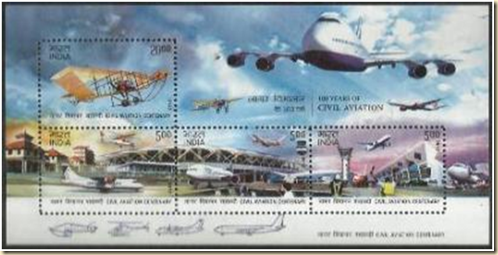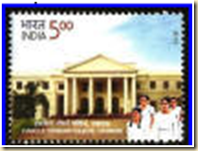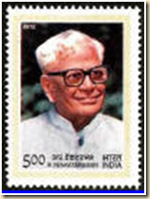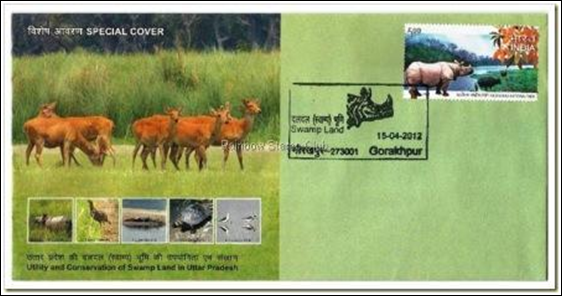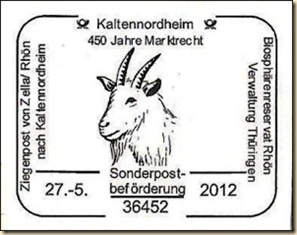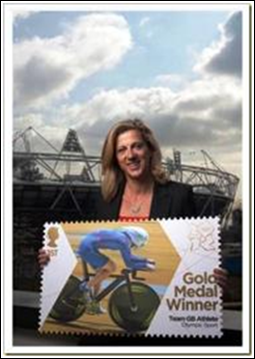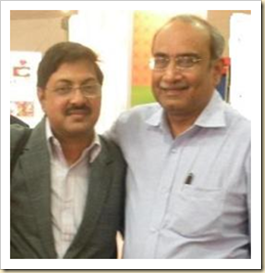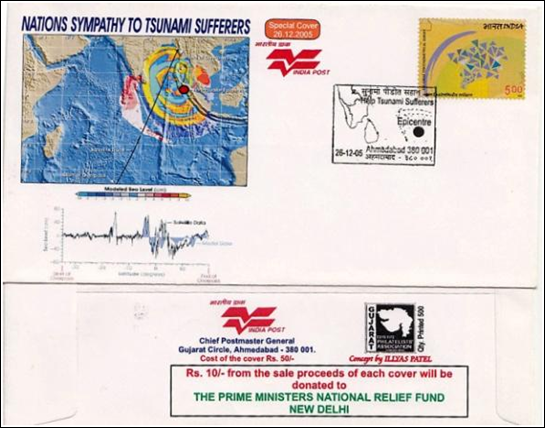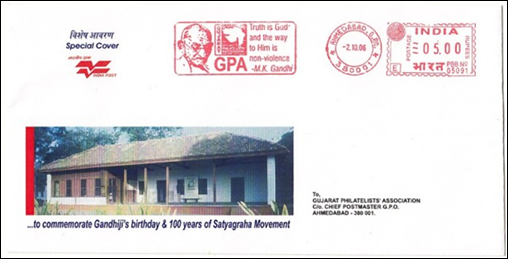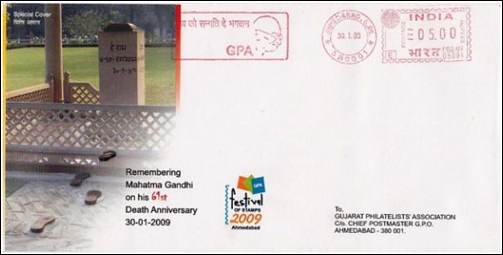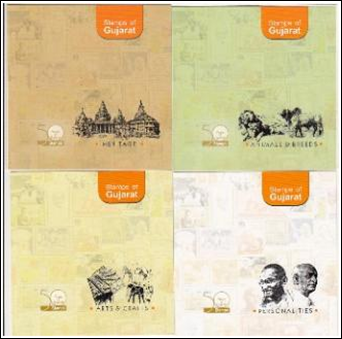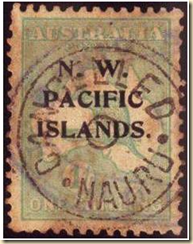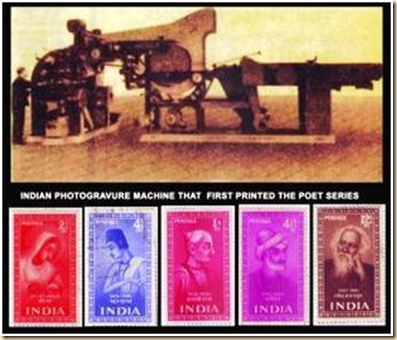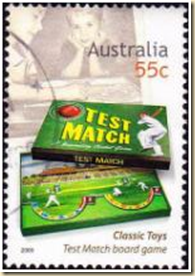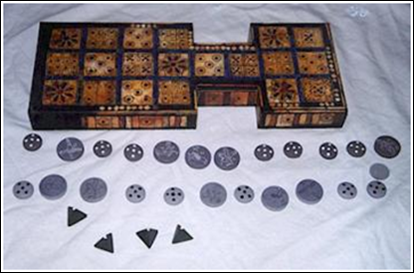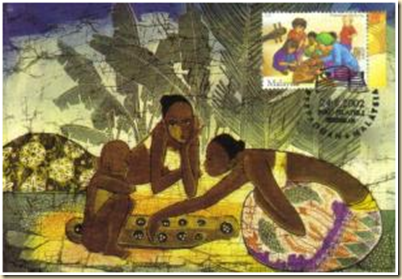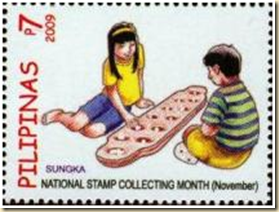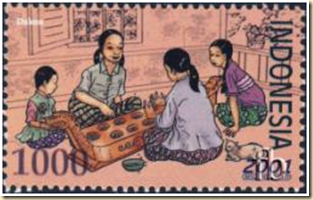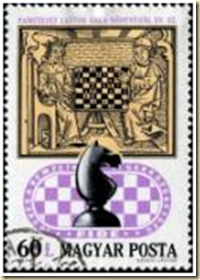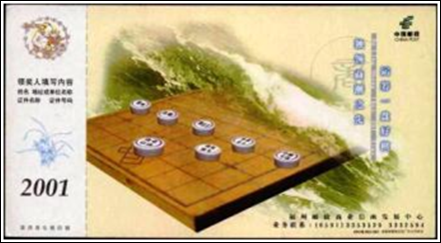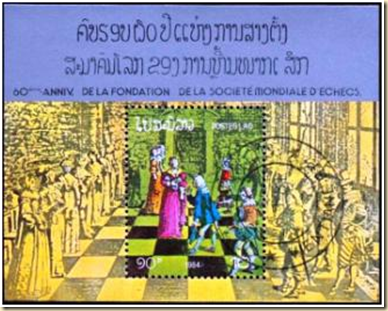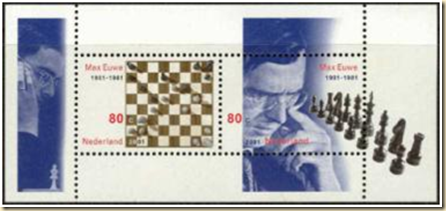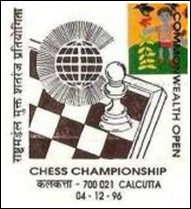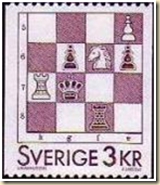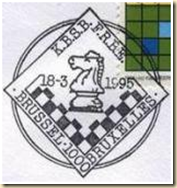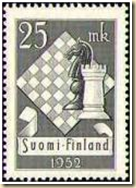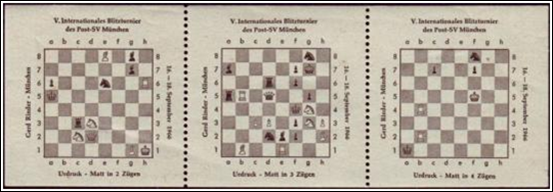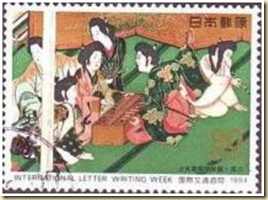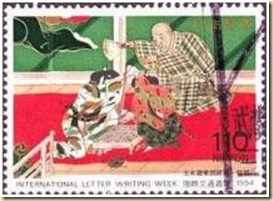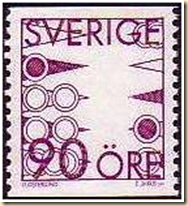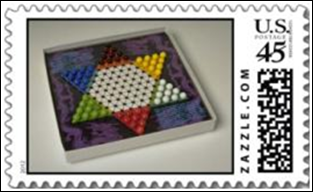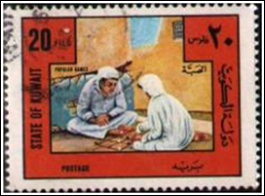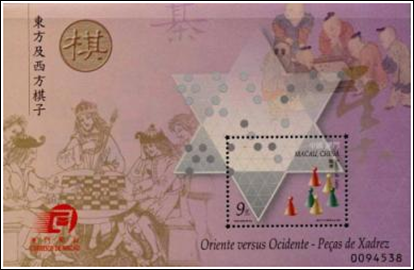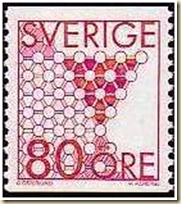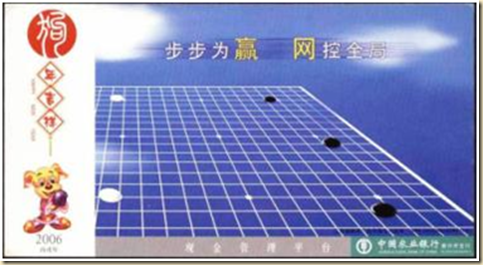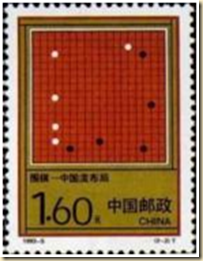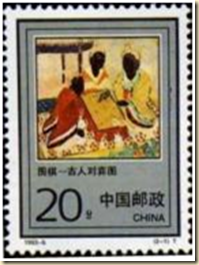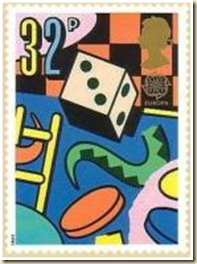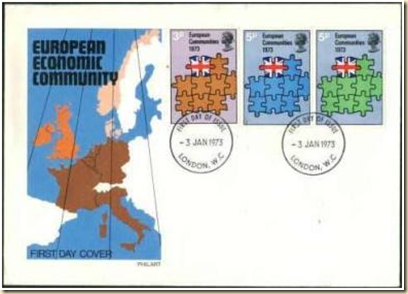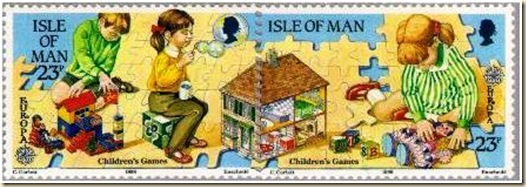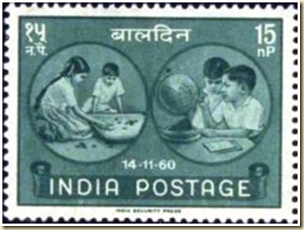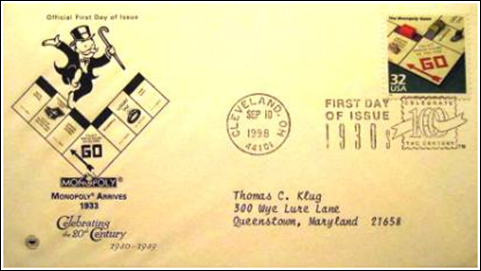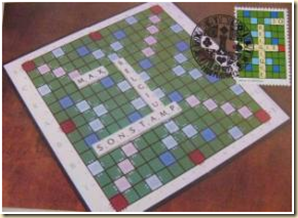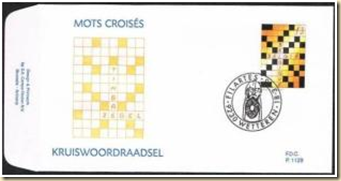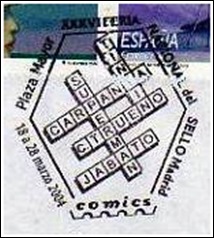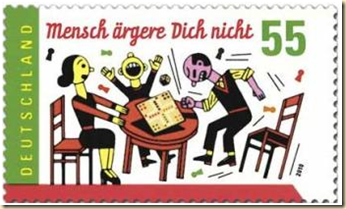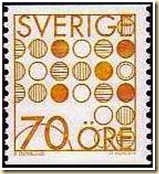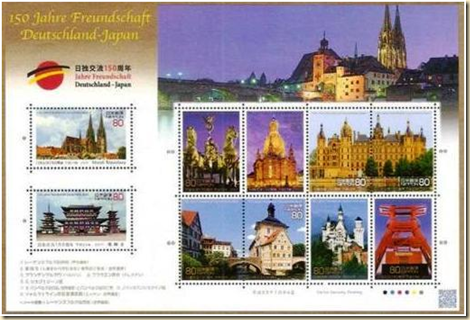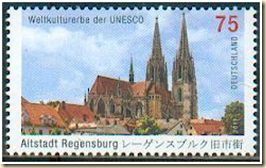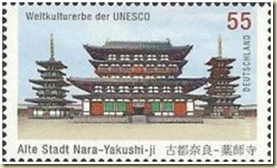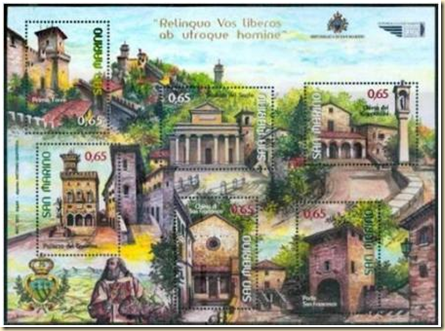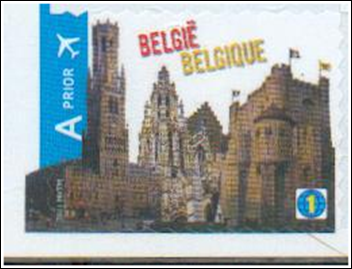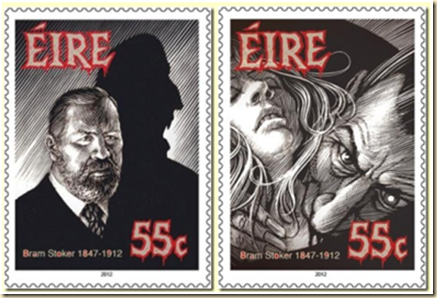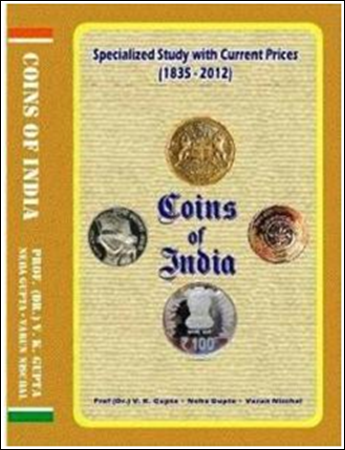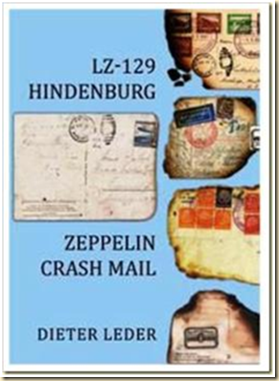Date of Issue : 14 April 2012
The wreck of Titanic is worldwide known and a number of movies has been filmed and novels written about the tragic event when 1517 persons lost their lives. Commemorating that 100 years have passed since this catastrophe, A £3 stamp was issued by Jersey Post on 14 April 2012 to mark 100 years since RMS Titanic hit an iceberg and sank.
Shimla May 2012 Vol. V Issue # 53
Monthly e-Stamp Bulletin Edited by Jeevan Jyoti for free circulation among philatelists
Readers are requested to send reports of philatelic activities in their area for publication. Short write ups by the readers about their journals, societies, publications and philatelic requirements can be sent for inclusion in this bulletin to j.jyoti9@gmail.com or rainbowstamp2008@gmail.com and by post to –
Ms. Jeevan Jyoti, c / o Mr. Ajay Srivastav, Director, Great Himalayan National Park, Shamshi, Distt. Kullu. PIN 175126. (H.P.) India
Note- This bulletin is only for circulation among a limited group of philatelists without any commercial purpose. The bulletin will be sent to the readers only on request. Those who wish to receive it regularly please reply giving the name of your city / country with the subject SUBSCRIBE RAINBOW
Dear Reader,
May 2012 issue of Rainbow Stamp News is on your screen now. Four years have passed, India Post has not organized National Philatelic Exhibition so far and philatelists all over the country are waiting for the next National Exhibition. It is expected to be held in Hyderabad in November this year but the official announcement about the same by India Post is still awaited. Let’s hope that India Post would soon announce the venue and dates of the exhibition.
In the last few years we have not seen any strong National Philatelic Federation emerging in our country. So it is high time for the whole philatelic community to join hands and make strong efforts to revive Philatelic Congress of India which was once the controlling authority of philatelic activities in India. The PCI must hold an immediate election and new upcoming young and energetic philatelists should also be introduced in its working / executive committee to enthuse new blood and brains for its smooth and active functioning. If opportunity is given to new and youthful philatelists, certainly PCI will be back on its track as it will be strengthened and smoothened.
Some of the National Commissioners appointed for the International Philatelic Exhibitions are not doing their duty well . No need to mention specific name here but recently the participants of an International Exhibition have not received their exhibits and medals even after the lapse six and a half months of the exhibition. They have also not been properly communicated by the commissioner about the cause of delay in delivering the exhibits and medals and further have been behaved irrationally . This is a matter of great concern which is to be taken seriously by whole philatelic community and senior members of governing council of PCI who nominate commissioners for International Philatelic exhibitions. This certainly is highly detrimental for the development of philately.
This is all for this month….More in Next Issue…Happy Collecting !!
-- Jeevan Jyoti
Contents
· Recent Indian Issues
· In The News
· Interview
· From the Desk of Naresh Agarwal
· Beginner’s Section
· Specialized Section – Let’s Play by Dr SK Agarwal
· Reader’s Right
· New Issues from Other Countries
· Philatelic Clubs and Societies
· Blogs & Websites on Philately
· The Lighter Side
· Book Review
· Editor’s Mail Box
· Current Philatelic Magazines – Newsletters
Recent Indian Issues
· 1 March 2012 Vasantdada Patil – Rs 5
· 9 March 2012 Shyama Charan Shukla
· 14 March Civil Aviation Centenary – 4 stamps – 3 x Rs 5, Rs 20 + MS
· 12 April IT College, Lucknow
· 17 April 2012 Godiji Temple, Mumbai – Rs 5
· 18 April 2012 R. Ventkataraman
Forthcoming Indian Stamp Issue
May 17: M B Kadadi
Recent Special Cover and Postmark
The above recent cover issued issued from Gorakhpur is available at Rs 25 each with postage of Rs 25 ( for 1– 5 covers) on following address. Payment must be sent by Money Order :
Postmaster, Gol Ghar Sub Post Office, Gorakhpur – 273001 (UP) Ph. 8004958478
17 March 2012 : 150 Years of State Bank of India, Allahabad Branch
24 March 2012 : Silver Jubilee Year : 2630 MW Thermal Power Project, Anpara Sonabhadra
24 – 25 March 2012 : KANPEX 2012 , Kanpur – two sp covers
15 April 2012 : Utility and conservation of Swamp Land in Uttar Pradesh – Gorakhpur
28 April 2012 : Jainism – Patna
View : Special Covers 2012 by India Post
New pictorial cancellation from Germany
A new cancellation on goat will be released on 27 May 2012 from Germany. Interested collectors may contact Mr Wolfgang Beyer, Vice Chairman of the German Collector Group ArGe ZOOLOGIE. Mail: Wolfgang.Beyer1@polizei.sachsen.de Postage rates are 0,75 Euro AIRMAIL or 2,80 Euro REGISTERED AIRMAIL.
450 years back the small town Kaltennordheim got the right to hold regular market. In those time there was more regulation in such matters. May be it is also the first known date of existence for this town. There will be a festival for this purpose. Goats were sold at this markets. But in May there will be a transport of postal items by a goat on 27th May 2012.
In The News
OLYMPIC FIRST FOR TEAM GB – NEXT- DAY STAMPS TO BE ISSUED FOR EACH TEAM GB GOLD MEDAL WIN DURING LONDON 2012
During the Olympics ( 27 July -12 August ), Royal Mail will be issuing stamps for each Team GB gold medal winner the day after their victory. This is a first for any host country, and a first for Royal Mail issuing next-day stamps.
Royal Mail’s stamp design for each gold medal Team GB win is revealed today for the first time by British Olympic gold medallist Sally Gunnell OBE
• The main image of the stamp will, wherever possible, be a photograph of the Team GB athlete or team in action from their gold medal winning final. Where this is not possible, the image will be of the athlete’s gold medal winning journey taken from a heat or from their gold medal award moment on the podium
• This will be the first time any host country has used action shots for Gold Medal stamps and issued them next day, during the Games. This will also be a first for next day stamps from Royal Mail
• Royal Mail’s team of picture editors, graphic designers, etc, will be on standby and ready to swing into action when Team GB strikes gold.
• Gold Medal stamps will be on sale at 500 selected UK Post Offices by lunchtime the next day and on www.royalmail.com after each gold medal win by Team GB. They will then be distributed three times during the Games to a further 4,500 Post Offices nationwide .Many of the 500 selected Post Offices will, for the first time, open on Sundays during the Games
- Melanie Seasons
2012 EUROPA Stamp Promotes Travel and Tourism
Each year, PostEurop the association representing European Public Postal Operators organize the best of Europa Stamp Design Competition. On 1 April 2012, PostEurop launched the public online voting competition based on one vote per registered voter. The theme for this year's competition is "Visit". Based on the concept, philatelic designers designed and created EUROPA stamps, which invites the viewers to discover the marvels of the country or city it represents.
"We are excited with this year's exquisite entries and even more excited to see integration of innovative elements such as Quick Response Codes (QR Codes) and new hidden images (Chameleon Code) for postage stamps introduced, to bring the design to life," said Markku Penttinen, Chairman of the PostEurop Stamps and Philately working group from Itella.
The online competition will end on 10 June 2012 and the winning stamps will be announced at the PostEurop Philatelic Forum to be held on 13 June 2012 in Paris
Olympex 2012
The last edition of Olympex to be organised by FIPO, will be held from 24th July to 9th September 2012 at the prestigious headquarters of the British Library of London. It has been included in the cultural programme of the Games in London. The exhibition will not be as grandiose as the previous ones due to the limited budget provided by the IOC and to the complete absence of the English Postal Administration and of the Organising Committee of the Games (LOCOG). This has influenced the choice of the location of the exhibition which will be certainly prestigious but of limited dimensions.
Consequently the exhibition will be exclusively on invitation and based on the London Games of the Olympiad : 1908, 1948 and 2012. There will be no national commissioners and the collections that will be invited will reach London without any expenses for the Organising Committee. This exhibition will officially close the 30 years activity of FIPO.
Exhibitions..
IPHLA 2012
Specialized International Exhibition for Philatelic Literature
IPHLA 2012 : A specialised exhibition for Philatelic Literature is going to be held from 2 to 4 Nov.2012 in the town hall of Mainz (Germany). This exhibition will be held under the patronage of FEPA & AIJP but some non European countries are also invited by them and India is also one of them.
No Federation Commissioner has been nominated . Please go through website www.iphla.de
For any information please contact to Mr. Wolfgang Massen, Email: w.maassen@alip.org
THAILAND 2013
THAILAND 2013, International Philatelic exhibition will be held in Thailand from 2 to 14 August 2013 in Bangkok, under the patronage of FIP. The World Philatelic Exhibition will take place from 2 - 14 August 2013 at the Royal Paragon Hall 1-3, 5th floor, Siam Paragon, Bangkok. The event will feature not only some unique postage stamp collections, but also displays of other rare and valuable collectibles from around the world. A stamp contest and competition of OTOP products will also be held as part of the event, with an international panel of judges from member countries and representatives of countries submitting collections for display.
PCI has nominated Mr. R D Binani as Commissioner for India, his address :33-B Rowland Road, Kolkata 700 020 E mail : binanipm@gmail.com Mob:9830073058
INDONESIA 2012 WORLD STAMP CHAMPIONSHIP
INDONESIA 2012: International Philatelic exhibition will be held under the patronage of FIP from 18 to 24 June 2012 at Jakarta Convention Center. The exhibition will be known as INDONESIA 2012 WORLD STAMP CHAMPIONSHIP. Mr. S. Sahoo, is National Commissioner for India. His address is :- D-3, BJB Nagar, Bhubaneshwar 751 014 Email: sahadevas@yahoo.com
Stamp and Coin Exhibitions in India
KOTTAYAM NUPEX 2012
The Kottayam Philatelic & Numismatic Society will be conducting an exhibition for stamps, coins & currencies on May 11,12, & 13, to commemorate the 75th anniversary of the First stamp exhibition held in Travancore ( Kerala) at Y.M.C.A. KOTTAYAM (1937).
VENUE : KPS MENON HALL ( NEAR PUBLIC LIBRARY), SASTRI ROAD,KOTTAYAM, KERALA- 686001 (I K.M FROM RAILWAY STATION).
For more details Contact : Sunil Joseph (09446124923), Atish Jain (09447756118)
3rd National Numismatic Exhibition - Hyderabad
18th May 2012 to 20th May 2012
Venue : Maruti Gardens Convention Center
No. 11-4-669/1, Beside Om International Hotel, Lakdi Ka Pool, Hyderabad.
Organizer : Marudhar Arts 114 (F6), 1st Floor, 120, Pamadi Chambers, Dr. D. V. G. Road, Basavangudi (Gandhi Bazar),Bangalore 560 004 (INDIA) Phone +91-80-6532-9800, Mobile +-91-0-9243145999 Fax +91-80-2661-9800 email:- info@maruphilaque.com
British North America Philatelic Society (BNAPS) Youth Philatelic Essay Contest Announced
The British North America Philatelic Society (BNAPS) is having an philatelic essay contest for young people ages 6 – 18.
According to an press release the group sent out, "Stamp as well as cash prizes will be awarded. Teachers, scout and stamp club leaders, as well as any adult who works with youth and the stamp collecting hobby are invited to share the contest information."
It goes on to say, "Youth are asked to find one or more stamps that are a meaningful symbol of their country. Examples include flags, monuments, and other objects of historical significance. The stamp(s) will be affixed to the page along with an essay of less than 250 words. The written article should explain why the (flag, monument, historical item) is an important symbol for their country. The essays may be handwritten or typed, double space is preferred. The essay must be the original thoughts of the entrant."
"Prizes will be awarded by age group: 6 – 8, 9 – 11, 12 – 14, 15 – 18. Monetary awards of $25, $10, and $5 will be awarded respectively to first, second, and third place winners in each age group. Winners will also receive a philatelic prize. The first 100 entries will receive a free packet of stamps.
"Only one entry per child. Each entry should include the name of the child, complete mailing address, age as of January 1, 2012, and a brief description of their collecting interest.
Entries may be submitted electronically to nrdyer@comcast.net or by mail to Bob Dyer, 1708 Granada Court, Petaluma, CA 94954. (A photocopy may be sent – color preferred.)
The entries become the property of the British North America Society and will not be returned. BNAPS reserves the right to publish entries on its website.
The contest is open to youth of any country. Deadline for contest entries to be received is May 15, 2012. Direct any questions to Bob Dyer"
To visit the British North America Philatelic Society (BNAPS) website, click here.
Auction
ITS Postal Auction No.56 – Last Date: 12.05.2012
For details please visit http://itsstampnews.blogspot.com/ OR ITS at http://indianthematicstamps.webs.com/
Indian Thematic Society
Registered with the Registrar for Societies in India
Chapter of American Topical Association, USA
MIG # 3464, Phase Two, Dugri Rd, Ludhiana - 141 013
Phone: +91 161 2521244 Mobile: +91 98728 51244
http://indianthematicstamps.webs.com/ OR http://itsstampnews.blogspot.com/
E mails: indianthematicsociety@gmail.com OR surajjaitly@hotmail.com
Philatelic Exhibition on Monuments by ASI…
Archeological Survey of India (ASI) is organising a Stamp Exhibition on Indian Monuments, Museums, Paintings and other historical items on philately. The Subject of the Exhibit may include Indian Cultural Heritage, Monuments, Museums, Coins, Antiquities and other related stamp and material telling a story about India and its culture. This exhibition will be a part of 150 years of ASI in India. The venue for the exhibition is Red Fort New Delhi and will be there for 2 months. It will be inaugurated by the Minister on 15th May 2012. 20 frame exhibit is given by India Post, and about 20 frames by Indian Philatelists. Only select exhibits will be displayed in this exhibition. Exhibitors will be given a certificate of Appreciation by minister. And may be supported with a memento.
Interested philatelists may kindly contact Mr Ajay Mittal on phone or email at an earliest possible for further details.
- Ajay Kumar Mittal Mobile : 9811032311, 9311332311
Email : ajay@kshitiz.com ajaymittal1957@gmail.com
News from Clubs and societies
Seminar on Promotion of Thematic Philately
Ludhiana Philatelic Club, Philatelic Congress of Punjab in collaboration with Deptt of Posts organized a Seminar on Promotion of Thematic Philately, Stamp Exhibition and Stamp Bazaar on 21-22nd April, 2021 at Lions Bhawan, Ludhiana. The Seminar was inaugurated by Sh. Charanjit Singh Atwal, Speaker, Punjab Legislative Assembly. He was accompanied by Sh Surinder Singh Namdhari, Parmukh Namdhari Darbar, and Direrctor, Apollo Hospital, Ludhiana.
Over 150 students drawn from 10 schools participated in the Seminar. The seminar focused on the use of theme-based stamps and use of stamps as teaching aids. The Seminar was conducted by Mr. Vinod Sabharwal and Madhukar Jhingan from New Delhi, Mr Naresh Pahwa from Jalandhar (He also presented the presentation of Jeevan Jyoti of Rainbow Stamps, Kullu, Himachal Pradesh, who could not make it due to her preoccupation) and Dr. S. K. Sondhi of Ludhiana. They covered the various aspects of promoting thematic philately as well use of stamps in class rooms.
A Stamp Bazaar was also organized on this occasion in which about 10 dealers from various parts of the country participated. A “Spot Stamps Auction” was also held. This was conducted by Sh. A R C Shah of New Delhi. Professional philatelists competed fiercely to outbid each other. 24 lots were auctioned on this occasion.
Interview
In this issue meet with Mr Mainak Kathiara, Presiden of Gujarat Philatelists’Association. Mr Mainak is a renowned philatelist from Ahmedabad and known for designing some very exquisite special covers on special occasions which have always been highly appreciated by thematic philatelists. He brought out a Tsunami cover in 2005 which were charity covers in nature-Rs 10 out of the sale proceeds of each cover were donated to Prime Minister’s National Relief Fund. That was a novel idea used by Mr Mainak Kathiiara in philately.Mr Kathiara came into philatelic field in 2004when he visited G.P.O. Ahmedabad for the first time at the age of 42. Since then he started collecting items of Post Independence era. Now he has collected lot of philatelic items on different themes. he wishes to convert them into exhibits in coming years. It’s a great pleasure to publish his interview in this issue taken by our esteemed writer Mr Naresh Agarwal. He shares here his views on different aspects of Philately…… – Editor
 Mr. Mainak Kathaira is a well known name in the field of philately in India as he has cemented his place in the big names of philately by virtue of the speedy and positive changes and actions taken by him for promotion of philately in last 5/6 years after he became president of Gujarat Philatelic Association. Mr. Mainak Kathiara, a businessman engaged in wholesale textile trade, is a late comer to the field of philately though his father was a serious collector. Though he has various thematic collections but his main interest is India Post Independence. He believes in creation and promotion and there he gives his whole devotion. He is known for pioneering creation of special designer covers and cards in Gujarat and their promotion by sales. He has in his credit various stamp shows especially “Festival of Stamps” and various covers, cards and booklets. As a very close observer of happening in the field of philately in India, his valued opinions will certainly help philatelic fraternity in giving direction to philately in India.
Mr. Mainak Kathaira is a well known name in the field of philately in India as he has cemented his place in the big names of philately by virtue of the speedy and positive changes and actions taken by him for promotion of philately in last 5/6 years after he became president of Gujarat Philatelic Association. Mr. Mainak Kathiara, a businessman engaged in wholesale textile trade, is a late comer to the field of philately though his father was a serious collector. Though he has various thematic collections but his main interest is India Post Independence. He believes in creation and promotion and there he gives his whole devotion. He is known for pioneering creation of special designer covers and cards in Gujarat and their promotion by sales. He has in his credit various stamp shows especially “Festival of Stamps” and various covers, cards and booklets. As a very close observer of happening in the field of philately in India, his valued opinions will certainly help philatelic fraternity in giving direction to philately in India.
Mr Mainak Kathiara may be contacted at email : mainak61@yahoo.com
Interview with Mainak Kathiara
1. How do you feel about your connectivity with philately and how strong is your bond with it?
Philately has opened a new horizon for me. It has been a platform to make new friends and to travel to various exhibitions being organized. It is fun all the way. Interaction with philatelic friends helps in many ways apart from philately. Strong connectivity is there and the bond is of warmth.
Gujarat is lucky to have 4 good C.P.M.G.'s in recent past in the form of Ms. Radhika Doraiswamy, Ms. Vijayalakshmi Sheth, Mrs Karuna Pillai and Ms.Humera Ahmed. They always supported philately and whenever a new idea was suggested they readily accepted it in true spirit. Good gesture from the staff of Gujarat Postal Circle has also helped in promoting philately. My sincere thanks to all. I would consider myself lucky in meeting so many good people during my 8 years in philately. This connectivity and bonding has helped G.P.A. and me to be very active in promoting philately.
Naresh Agarwal with Mainak Kathiara at INDIPEX 2011
2. How did you enter the beautiful world of philately? Some memories of your beginning on the path of philately?
My father was a stamp collector, but I entered into the world of philately in 2004. My first purchase from the Ahmadabad philatelic bureau was the m/s of Tarangini. I was also impressed by the thematic issues of 2003 which were available at that time. This was the starting of my journey into the beautiful world of philately. Later on I correlated the collection of my father and started building various collections.
3. India post has been conducting several philatelic exhibitions regularly of different levels. What do you say about the results, impacts and benefits or drawbacks of such exhibitions?
Results: It will give recognition to the exhibiter and suggestions to improve his collection.
Impact: Exhibitions give tremendous inspiration to new philatelists. Accumulators may turn into philatelists and philatelists may be inspired to become an exhibitor
Benefits: Meeting fellow philatelists and looking at various collections will certainly inspire people to enhance their collections. Collectors get a chance to exchange or buy their required items at the exhibitions.The organizers are the backbone for any event, and if they put a good effort and if the juries are impartial, I don't see any drawbacks.
4. Various dedicated philatelic societies have conducted several private philatelic shows in the recent past, some which have been rated as highly successful whereas others became a matter of sorrow for exhibitors and visitors. Looking into present scenario, what do you feel about conducting private shows? What are your suggestions for do's and don'ts?
I would say that the activity must go on. Timing and details of the exhibition should be planned well (no overlapping of dates) so that more philatelists can come and participate. In the long run the fittest will survive. Private shows should try to get the assistance of India post.
5. You are known for creating, popularising and making a great philatelic market of special private covers with cancellations starting with Mahatma Gandhi theme. What do you think about your contribution to this field and the future of such creations?
After my creation a lot of philatelists have jumped in. Some make these covers for their satisfaction whereas others sell. The creativity is on a roll. I suppose the quantity would be limited and it will be absorbed by the market in due course. My suggestion to the creators is to make quality products and sell at a reasonable rate. Creativity is for personal satisfaction. Future of these creations will depend on its acceptability into ones exhibit & market fancy.
G.P.A. came out with Tsunami covers in 2005 which were charity covers in nature-Rs 10 out of the sale proceeds of each cover were donated to Prime Ministers National Relief Fund.
Two meter franking covers of Gandhiji was a new idea and was an enormous success. Swarnim Gujarat booklets were issued in 2010 to mark 50 years of Gujarat state. G.P.A. paid Rs 60,000 as a royalty to D.O.P..Never has an association paid such a big amount to get a permission.
The proposal of the Govt. of Gujarat for issuing a stamp on 50 years of Gujarat was not granted. Hence to commemorate this event we at G.P.A. brought out these booklets.
6. Judging exhibits is the most thankless job for jury and is condemned most of the times. Judging in private shows is always considered partial and influenced. Is it true? If so, what do you suggest?
Judging an exhibit is indeed a thankless job. They are humans and at times there can be an error of judgment. Biased judging should not be accepted. Young juries should be incorporated in India and they should be free from any negativity. Jury should have the time and will to suggest positive and negative aspects of the collector in front of his frame. Detailed mark sheets should be given and suggestions to improve should be highlighted. Then only the quality of exhibits will improve. The jury can make or mar a collector-their role is very crucial-they should be transparent and judge without any bias. They should upgrade themselves. Of late the respect of juries in India is on the downside which they should earn by judging impartially.(without apun ka aadmi attitude.)
7. Are you satisfied with the working of philatelic advisory committee? If not, your findings and suggestions.
I was told that P.A.C. is a dignified body with 43 members, but only 3 are from philatelic field. I would like to suggest a few things.
* Not more than 30 stamp issues should be taken out annually
* Major emphasis should be on the thematics...stamps of regional leaders and personalities have no value in international philately.
* Symmetry should be maintained for FDC, M/S, cancellations etc.
* Rs 25 stamp should be issued in place of Rs 20 as it is the international postage and ONE INDIA ONE RATE for speed post.
* Brochures are important as they tell the details of the stamp but the collectors neglect it. Mandatory insertion of brochure with FDC would help in promoting philately. No FDC should be sold without a brochure...Of course at a price.
* Yearly plans of stamp release should be strictly adhered to. Ministry should support this and not make a confusion regarding the release date, once it is finalized.
* Standard of packaging should be drastically improved. Stamps are brand ambassador of our country and hence they should be showcased well.
* Transparency among the issuing authority and PAC should be there and more new faces (preferably young) with creative ideas from the philatelic fraternity should be incorporated in the working of the PAC.
* Meetings should be held regularly to incorporate new ideas and take feedback of the items issued.
* Meetings should be held as a creative activity and not as a formality.
8. Do you think that PCI, the apex body representing philatelists in India at all platforms is working satisfactorily? If not why and what should be done to check it, improve and make it more efficient?
PCI : Individually Marvel / Collectively Directionless.
Individually they are all stalwarts, in philately as well as their work and business. Collectively they have lost the direction and momentum to promote and upgrade philately in India. They should rise above their individual interests and do some constructive work in developing philately in India.
People at helm at PCI know what to do but the willingness to do is still not there on their agenda. Voice of philatelists across India say ‘WAKE UP’ before it is too late. You are the trusties of philatelists of India and you should understand your powers and responsibility. Come out of your preconceived notions and take suggestions of other groups at their face value. Further, PCI also needs to persuade postal officials at top to think and act in better interest of Indian philatelists in general and need to have better say and standing with them in decision and policy making related to postal stamps, operation of Philatelic bureaus,holding exhibitions and even disbursement of funds in this regard,if possible
Why was Philapost discontinued? It is still a question. Now the egos between the two different parties need to be buried. I think the other group has no problem if the people at helm do some creative work / provide transparency and make PCI a powerful and respectable body representing India.
9. Professional philatelist is an established term in philately but commercial philatelist is the new term emerging in the philatelic scene in India where we find there is hardly any true philatelist. All philatelists are turning into philatelic traders, dealers and professionals in one way. How do you see the future of philately in India with such changing behaviors and thinking of philatelists?
I definitely see a positive trend. New people are entering this hobby & that only will take philately to newer heights. I see no harm in the rise of commercial philatelists. Once investor / trader / dealer / philatelist have tasted some profit he will not quit philately. Investors of today may turn into philatelist tomorrow. The new commercial philatelists are more computer savvy & have better finance/connectivity than the traditional dealers. If the new commercial philatelist can create (4 A's) i.e awareness, accessibility, affordability & availability, India is a very big market and they are sure to stay.
Times change...lot of new items are issued...old items are getting unearthed...items are getting expensive..there is a limit about ones finance..thanks to the internet. Looking to all this philatelist is motivated to upgrade himself to be connected in the hobby. With the changing time he is induced to sell his extra material and use the money to buy the missing items for his collection.
Still today selling by a philatelist is considered a taboo and is looked down by fellow philatelist. I see no harm if a collector sells his extra items or the material which he is not collecting. This will help the fellow collectors to get the material they are searching for their collection. One has to be practical and change with the time.
10. Tell us something about philatelic journalism in India. How do you rate various e-bulletins being issued/published today in India.
E-bulletins have created tremendous awareness. It is information at fingertip. It is the need of the hour and flavour of this era. Print bulletins take a long time to get published and its distribution is costly and time consuming. Information through e-bulletin spread very fast and can be seen world over. Only thing the print bulletin can do to survive is to bring out some research articles.
A print bulletin preferably a bi monthly of international standard should be started by India post like Phila Post.We are surprised why this is not happening when there is so much talent & resources within the country.
Last few years have been good for philatelic journalism. New writers have emerged & news updates have become handy. Thanks to Mobile philately, Stamps of India, Rainbow Stamp Club, Se-tenant stamps of India, Indian Stamp Ghar etc..Thanks to independent blogs and websites who put something new & interesting to sustain the hobby.
11. With the invent of technology like internet causing promotion and usage of e-mail and other e-services, how do you see the future of philately? Your suggestion for promotion of philately in India.
I see very bright future. Technology has sustained & spread the hobby bringing in many new philatelists into the arena.
One can refer to my article <Promotion of Philately--a different perspective> which was published in Phila Post and in Rainbow Stamp Club.
12. Your appeal to philatelists of India as an individual, societies of India as a group of philatelists?
Philately is a creative hobby & my experience says that in the long run a philatelist is never a loser. For being successful, ones aim should be focused on the subjects which he can complete. One should buy selectively. A collector’s motto should be "get the knowledge, share the knowledge & spread the knowledge". He should read & interact with knowledgeable philatelists. As an individual one should not be afraid to experiment his creative ideas. I would suggest an individual to be more focused on the subject area & don’t get involved in petty politics. Remember, philately as a hobby should be a stress reliever and you have to enjoy this fascinating hobby.
It would be great for any society if more members take interest in its functioning (rather than 1 or 2 in many associations).Philatelic societies should strive hard to get young members in their area. This will expand the base & sustainability of philately. Lot of constructive activities can be done under the banner of a philately club/society.
GPA was instrumental in proposing the name of some young philatelists as apprentice jury in stamp exhibitions and has also honoured senior philatelists/dealers during Festival of Stamps 2009.These gestures of GPA & various other societies will set a platform for young & deserving persons to take charge of philately of India in future.
It is a privilege to serve as president of Gujarat Philatelists' Association from 2006.I am grateful to all the members who supported me and helped GPA to do good work in promoting philately.
 From the Desk of Naresh Agarwal
From the Desk of Naresh Agarwal
PRESENT PHILATELIC SCENERIO OF INDIA
( A QUICK REVIEW OF RECENT PAST, PRESENT AND NEAR FUTURE )
Some people say that philately in India is prospering and progressing where as a good lot of people are worried about the direction in which the philately of India is moving? Really, it is a matter of serious concern to see where exactly the philately in India heading? What exactly is happening in the philatelic field of India? What is the future of philately in India? Are all the activities which are going on in this field really good for the philatelists or are detrimental for the development of this hobby?
Apparently if we see, the things look very bright and pleasant as we see there are regular issues of postal commemorative stamps, S/S’s, M/Ss’ Stamp sheet lets, different covers, cancellations, postal stationery at one stage. Secondly for promotion of philately regularly postal shows and exhibitions are being held at one or the other places in India. Thirdly India post has introduced new and innovative philatelic material like My Stamp, Stamps with special covers, Carried covers, Customized Covers etc. and above all, last year organizing the World Philatelic Show INDEPEX2011 in Delhi. Looking in to all this one can not have an inch of doubt that philately is at its best in India today.
Let’s critically analyze the present situation looking in to its short and long term effects while closely discussing the present scenario in its real sense taking up issues one by one :
MALFUNCTIONING OF PHILATELIC BUREAUS :
As many as fifty nine philatelic bureaus are there in selected cities of India which have been opened in view to cater the philatelists by regular supply of the Indian postal stamps and other material which is issued for this purpose. A few of the bureaus are certainly functioning well as those have trained and dedicated staff and also have good quantity of material at their disposal to serve and fulfill all the requirements of the members/account holders and also for those who are not members. But there are also some bureaus which functions very badly as those have improper set up, lack regular or trained staff who don’t have the will to serve or else they are overburdened with other jobs, delayed service, poor interaction with philatelists etc. and at some places the staff wishes to serve philatelic dealers and not the collectors.. Complaints are on table for the big bureaus too like Delhi, Patna and Mumbai also. All in all, most of the philatelic bureaus do not serve the purpose truly for which those have been opened.
ISSUANCE OF INNOVATIVE PHILATELIC PRODUCTS :
India post has come up with various new innovative philatelic products. During Indepex 2011, Chinar 2011 and other regional shows, we saw My stamp, Special covers, Carried covers, etc. Also lots of collectors are seen coming up with designer products created by them in form of maximum cards, special covers, private booklets etc. Certainly a new dimension and direction to philately. This has now created a community of new generation stamp collectors who love such creations and add flavor to philately. But when it comes to exhibiting such creation like covers, booklets, maximum cards, combination covers, designer vignettes on covers are not appreciable at all. In fact, there is a conflict between collection and exhibiting. There is certain joy in collection but joy of getting award is also there in mind. The present scenario has thus demoralized the new generation collectors who are required to be educated about the exhibiting requirements. They need to make understand the difference between collecting and exhibiting.. So, to do that which gives them joy.
NUMBER OF SPECIAL COVERS TO BE ISSUED :
It is good that there is good craze of special covers being issued directly by India post or by private societies / organization under authorization from India Post as these covers serve collectors with different themes/ subjects reflected on these. It is seen that the deposit amount or the charges for these have been increased tremendously by deptt. i.e. Rs 10000.00 for 500 covers. This is certainly very high. These covers so creates a scarcity looking in to the demand and so their price become very high. It is felt that the number of covers to issued should be increased and numbered too so that these are made available to a good number of aspirants and also at a cheaper price. It is suggested that a printing of minimum 3000 covers should be made compulsory.
QUALITY OF SPECIAL COVERS :
In the recently concluded various regional and distt. level shows there were good number of special covers issued by the department. The themes selected for these covers have been found very attractive and welcomed by the community of thematic collectors but it is seen that the quality of the cancellations is very poor. On such occasions normally pictorial cancellations are issued as these are desired too to serve most of the philatelists looking for special cancellations. But we have seen that most of these are text cancellations which do not have good thematic value. Since most of the special covers issued are not commercially used, pictorial cancellations have importance from the philatelic point of view. Special covers do have made an impact but some of these are made by glossy paper which is not desired as it does not help soaking and drying the ink of cancellation.
Apart from this ,the most amazing fact is the poor quality of cancellation in spite of availability of good cancellation making material, technology and ink. The cancellations issued during this period have been found very poor as their text has been found illegible or hard to read, picture, if any hard to identify due to poor making and poor imprinting /application and bad cancellation ink.
There are a few very good cancellations too such as WWF cancellations and covers issued from Delhi and Gir Forest from Gujrat etc. . In general covers and cancellations both issued during private exhibitions have been found far better in all the terms. Covers and cancellations issued during Dak Ticket Mitan-2009 has also been found very good in quality and subject matter.
In all, there is a great need to think over quantity and quality of both cover and cancellation looking in to cover design, paper, cancellation design, application of cancellation etc. as special covers are gems of philately and add colors to one’s exhibit.
LACK OF PHILATELIC AWARENESS :
There have been numerous philatelic exhibitions, issuance of various philatelic products like stamps, covers, cancellations, stationery etc. which showed the willingness of the deptt. to promote philately. In other words to make people aware of philately and philatelic products. In general, there has been poor attendance at those shows specially of the children and students. Which has proved and professed the need of awareness among the students and children. Special campaigns in India are required before any show is organized. Publicity and philatelic workshops in schools and other platforms is essential and needs to conducted on regular basis. The lack of awareness is not only proved by the poor attendance and poor quality of exhibits in these shows too.
PRIVATE BOOKLETS VS AUTHORISED BOOKLETS :
Deptt. has been issuing booklets for last many years. Booklet covers do have philatelic value as these are duly acknowledged and appreciated for display in philatelic exhibitions. We have seen private booklets being issued by various persons and societies on regular basis with new and innovative concepts of topics, pictures and printing techniques. These are welcomed. But most of the buyers who purchase these for the purpose of displaying these in some exhibition do not know that private booklets are not allowed in shows. These booklets are being sold at very high prices too. Here it is not the deptt. but we the philatelists or the dealers cheat ourselves. If this is only for pleasure, there is no problem, it is appreciable otherwise it should be condemned or banned. We have also seen that the booklets have design faults. There is need to check all aspects of booklet design prior to its release.
MAXIMUM CARDS / PICTURE POST CARDS :
Like other philatelic items, Maximum cards too have attracted philatelists and also because Maximaphily is gaining popularity, maximum cards are in great demand. The newer generation of philatelists in India have fallen in love with this branch of philately as it gives wings to their dreams and span to their innovations and color to their creations. Maximaphily is truly expanding in India. Though India post has come up with very limited numbers of maximum cards but there are thousand of innovative card available India privately designed by philatelic enthusiasts. Here one thing needs to be taken care of is that philatelists or the designers need to know the true definition and requirement of a maximum card. We have seen many so called maximum cards are not MAXIMUM in totality.
MY STAMP :
Indepex2011 saw issuance of various innovative philatelic stuffs by India post such as MY STAMP, a truly fascinating and a memorable philatelic item which gave the person to tag his or any picture he liked with specified stamps selected by India post. The initial price of the sheet of 10 stamps of 5 Rs. denomination was Rs. 150.00.This price was welcomed by one and all. No one ever objected to it looking in to the fact that this was a new concept and needed addition cost by India post in view of extra equipments and team of skilled workers to prepare and post it. Even the postage too was free. It was expected that the MY STAMP concept would be used in the future shows and that happened too. In various regional shows in the few months saw issuance of my stamps but at double even more then the three times cost of it inaugural issue. Though philatelic fraternity bought it with zeal and zest but also cursed the deptt. for exploiting their sentiments by such exorbitant pricing. This is not a right practice. Prices were supposed to be decreased. But deptt. has now started behaving like private business organization which has an ultimate goal of earning money. Further to this, some of the dealers have procured a good lot of MY STAMPS issued during various such shows and later sold those covers/stamp sheets at very high premium at the tune of Rs. 1000/- per cover/sheet. This practice is detrimental to the development of philately. This reflects the attitude and thinking of the think tank and planners of the India Post.
STAMP SHEET- LETS :
In the last few years stamp sheet lets have been issued in abundance and also these are getting popularity as sheet lets give new look to the stamps and their display. Though the sheet lets have their own impact but it has been seen that their quality has been quite poor.
FIRST DAY COVERS :
There are good number of stamps issued during the last years and so the first day covers with cancellations. Some where the cancellations have been sized and designed very well looking in to the beauty of the cover and some where these have been so bad that whole beauty of the covers is maligned. Some designs are so beautiful where as some where there is no design only date stamps. Where as First day cancellations are supposed to be pictorial and with latest technology available these should be sharp, compact, clear and fine. In certain cases we have seen due to pre issue or post issue dates, the covers have been cancelled in the same date/fashion. Though it has created interest but not a good practice for India Post.
CHAGRES FOR PERMISSION FOR SPECIAL COVERS :
The charges for permission for issuance of special covers has been raised to Rs. 10,000.00 which is very high and plays a negative role in promotion of philately. Looking in the higher charges various organizations during their events fail to or withdraw themselves from releasing any special cover and cancellation .Hence, philatelists looking for such covers are deprived of getting some new element material for their collection. There is an urgent need to reduce the same.
BLACK MARKETTING OF POSTAL MATERIAL :
The last year has seen bulk purchase, storage and sale of philatelic material by so called philatelists or philatelic traders or philatelic dealers. This bulk procurement of stamps, sheets, covers by them and sale at premium later is not a welcome step for promotion of philately. This has in fact done commercialization of philately & has created an atmosphere where philately is being looked as a trade and not a hobby. Urgent need to take stringent steps.
TOO MUCH OF EXHIBITIONS :
It is highly appreciable step of India post to organize 100+ stamp shows at Distt. and Regional / Circle Level to promote philately in a span of 6 months with overlapping dates. Late in the financial year 2011-2012 the national headquarters of India Post released funds sanctioned by Government of India under the 11th Five year Plan that ends on March 31, 2012, to all its Circles for philatelic activities. These funds would have lapsed otherwise on March 31, 2012. This only appears to be the chief reason for holding 100+ philatelic exhibitions by India Post at state, region, and district level in a short span of 6 months instead of the usual 60 months.
Truly there is no advantage in asking a rhetoric question – who did these exhibitions really benefit? It is hoped that one day India Post will figure it out for itself that exhibitions even at local level need thorough work, exercise and need inputs from the various sets of people, stamp dealers, judges, experts before finalizing the dates and chalking out the program. This all has caused poor quality shows with low attendance of dealers, public and philatelists. And also the displays were of very poor quality. Hence, the very purpose defeated badly.
E-SERVICES :
Certainly there has been betterment in e-services provided by India post. Electronic mail associated with surface mail is providing better service to the country public in general. But philatelic use of e-mails and e-post has not yet been explored in India the way it should have been. It is felt that some innovative stationery products like pictorial telegrams forms and sheets, Airgraph service sheets and forms etc. are to be designed for this service which may later become good philatelic elements so to see development in philately. Otherwise also as the e-service is paving its way fast in the postal transmission, some desired innovations are the demand of the time.
IMPROPER ISSUANCE OF STAMPS ;
IMPROPER DATES, POST PONEMENTS AND PREPONEMENTS :
The stamp program issued by India post has been found very uncertain during this period as various stamps issuance program have been either proponed or postponed but there is no stick control on release of stamps as at some offices stamps are pre issued and at some places these are not released in time. In both the cases the genuine philatelists are harassed.
PRE MATURE ISSUEANCE OF STAMPS :
There has been number of stamps which were issued prior to their official date of issue in a few the past years .Some of such premature issues are : Spices of India M/S 2009,400years of Guru Granth Sahib Stamp and M/S 2005,Issues after sold by the post offices prematurely in 2008 : Rani velu Nachchiyar,Sheikh Thambi Pavalar, M. Bakhthavatsalam, Thillaiyadi valliamma,Udumallai Narayna Kavi, A T Paneerselvam, Aldabra Gaint Tortoise Rs.5 sheetlet, , Aldabra Gaint Tortoise Rs. 15 sheetlet, jasmine scented stamps M/S, Bismillah Khan, Coast guard M/S. This shows the mismanagement, poor administration and lack of control in India post. It is good for philatelists in one way but not an appreciable act at all as far as India post is concerned.
PRINTING ERRORS :
Perforation distortions, Improper margins, color shades in every sheet, color spread, color overlapping, ink scratches, image distortion are the regular printing errors and features in the Indian Stamps in recent years. Whether these are created or are genuine errors of printing is known to the press people but certainly with so much on regular basis and available in abundance have not only lost the interest of philatelists in searching error but have tarnished the image of Indian press which is now being seen with a low profile. There is a need to look upon this seriously.
WITHDRAWAL OF STAMPS :
In last few years there has been many instances of issuance of various stamps which had serious errors and were withdrawn after being put in to circulation. This has certainly given good philatelic stuffs to the collectors, treasures to preserve and proud off but has spoiled the image of India Post which is supposed to issue any stamp only after thorough thinking looking in to all aspects so that there is no conflict at later stage. But God knows what’s wrong there. Guru Granth Sahib, Migratory birds etc. have been some of the recent cases.
STAMP ON CONTROVERSIAL ISSUES :
India post has been very careful in issuing stamps to avoid any controversy. But in last few years saw a different scenario when many controversies arrived in this matter. India post need to be very careful in accepting any design, any proposal and must think and re-think before issuance of stamps of any nature. One must not forget in the history, stamps have caused big battles because of their designs. Better not to issue any stamp which might lead to any controversy.
IMBALANCE /IMPROER DISTRIBUTION OF NUMBER OF STAMPS AMONGST THE STATES :
India is comprised of as many as 29 states which have their own glorious history, rich heritage and versatile culture to be highlighted and honored through stamps. But it has been observed that there is a strong imbalance in issuance of stamps as we see stamps are being issued pertaining to particular state in abundance where as other states are deprived of from such honor. These states have all the potential to raise their claim for selection of subjects from those states.For example Chhattisgarh state has been a state of over 11 years having stamp issue subjects in abundance ranging from rich flora fauna, minerals, cultural and social heritage, personalities to be proud of. But so far only 2 or 3 stamps have been issued where as for new states such number should be more. Same way some subjects, themes, designs are given more importance over the other creating an imbalance. In fact, there is a need of strong stamp issue program worked out after thorough considerations.
IMPROPER PRICING :
Philatelists are also not satisfied by the pricing. Gandhi stamp of Rs. 100.00 is being sold for 250.00 just with presentation pack. Cost of pack is Rs.150.00 which has not philatelic value. Like wise there are other few more stamps.
The issuance dates of the stamps and their proponent and postponements on regular basis has been a matter of serious concern in the philatelic field of India. Even withdrawal of issued stamps too have put India Post in bad state many a times. Further, the quantity of printing errors on regular basis has in fact tarnished the image of India post though this has given philatelists a good chance to collect variety of Indian material but overall this shows the mismanagement and administration of India Post.
FAILURE OF PCI :
It is a talk of the time amongst Indian philatelists that Philatelic Congress of India, known as only and apex body of India philatelists has practically failed in it motto and have now become practically a private association which only give shelter to a handful of intelligent people which though are serious philatelist but most of them lack service attitude for philatelic development and promotion. It has the work to appoint jury, commissioners and enjoy meetings. But has failed in having any control or to give any proper guidance to the India Post think tank. There is no say of PCI body in any major decisions of India Post. PCI is formed to check the interest of philatelists in India but it has failed miserably in its so called efforts.
The pain of Indian philatelists on the standing of PCI can well be read in one of the articles in Phila Mirror Nov.26,2010 which talks about Degenerated State of Indian Philately literally cursing the PCI stating whose nominated heads work for their personal achievements and have no spirit to let other philatelists to shine and promote philately in any way. The starting lines of comments read as under :
“…Nothing of importance is discussed in general body or governing council meetings of PCI and everything important including awards and appointments, are available for the asking, but for a price, from a small group of people who are attempting to hold control and whose acceptability factor in general hovers close to zero”.
It is time that India Post should come forward and recognize individuals and institutions that have been doing good work in promoting philately. The PCI even though is meant to represent the interest of the philatelists has been actually doing damage to the promotion of philately being done by the India Post by misrepresenting the interests of the general collectors or else there is a need of complete restructuring of PCI.
POOR QUALITY OF YEAR PACKS :
India post has recently given a good news to philatelists as it announced availability of good number of presentation packs of 2009 and 2010.But surprisingly the year packs missing 2 or 3 stamps. Though the pricing was lowered accordingly but it was not a year pack. It was a months pack. Further, the pack was not a presentation pack but and ordinary cover. We understand this step had been taken to dispose off the material lying in the stock of India Post but should have been sold in a proper way. This step is otherwise appreciated and such more actions are being looked forward in future too.
PHILATELIC CLUBS AND SOCIETIES :
Philatelic societies in India are not functioning for development of philately and enthusing of pleasure among the philatelists / members. The societies normally run around one or two persons who have their own vested financial interests. Societies are either dying or are just defunct. There is no control on the functioning of societies. These are being used as platform for undertaking philatelic business. Exchange of stocks, sale of stock and philatelic trade.
There are only a few societies which are honestly working for the development and promotion of philately. But the future of such phila clubs does seem to be so bright. There presidents use power for their own interests. An unhealthy competition is seen prevailing amongst the philatelists to earn more and more through philatelic stuffs and also to get awards at exhibitions.
MUSHROOMING DEALERS :
Life has become fast. Time is money and so no one likes to waste time. Philately demands time. So a new trend has developed which provokes stamp collector to buy stamps and other material, see it, enjoy it, store it and sell it at premium. Internet has opened avenues for sale of philatelic products internationally. As internet has access to every one very easily, almost every collector has started dealing in Indian stuffs. This aspect has cut the roots of philately in India. Spoiled the habits of stamp collectors and shaped them in to immature dealers rather than collectors. In the recent times India has produced a good number of short term philatelic dealers/traders and so called professions who do not really serve the philatelists but in one way have curved the genuine philatelists too.
LICENCING OF STAMP DEALERS :
Stamp dealers though are considered back bone of philately and are the real developers and promoters of this hobby. But at the same time the lust to earn more and more, the trend to serve to earn has changed the notion. We see in India, the dealers purchase bulk of Indian material, store it and then after the market is created, they sell it at higher prices or else they have very good market overseas. This results in indirect exploitation of Indian stamp collector who sometimes have to be deprived off from getting their required stamps and other material or else they by it at high premium.
Looking in to the fact that there is new generation of stamp dealers coming up very fast in India with no true goal to serve Indian philatelists though they have all the willingness to serve philatelists abroad as they get very high service charge in shape of money by sale of Indian stuffs at higher price.
It is high time that some strict rules and regulations should be framed for such dealers to put a stop on the mushrooming of the Indian stamp dealers so that there is a check on this new upcoming phenomenon. Licensing of the dealers should be done and made compulsory. Every deal on sale sites such as Ebay, Delcampe etc. should be asked to make it compulsory that no Indian material which is up to 20 years old can be sold without having license from postal deptt. or other authorized agency which issues such license for this cause. And the dealer has to submit monthly record of such sales. This will certainly put some control on this aspect.
INTRODUCTION OF SOCIAL PHILATELY IN EXHIBITIONS :
A matter for great joy for philatelists is that for last 2 / 3 years, various organizers of philatelic exhibitions have introduced Social Philately Class which is new, interesting and upcoming class of philately. But it is matter of great regret that most of the veteran philatelists are not yet aware of this class or don’t have much know how of this class as for as exhibiting is concerned. Even the jury in such shows have been seen lacking the knowledge. However, there is need of training and educating philatelists in general to come in to the fold of social philately and other recently newly introduced classes of philately. A welcome step for development of philately.
NEW ENTRANTS IN PHILATELIC JUDGING :
A matter of great pleasure for Indian philatelists is that they saw some new faces as jury in the various exhibitions held this year. Mr. Rajesh Paharia, Prashant Pandya are some names who entered this field as apprentice jury and earned names. This year has been a trend setter in this field. A few more faces also likely to be introduced. Concerned authorities need to think upon these lines more aggressively.
SAD DEMISE OF SOME INDIAN PHILATELIC PERSONALITIES :
Some eminent philatelists personalities have left to their heavenly abode in last 2/3 years which certainly is a big loss to Indian philately. Thus a vacuum has been created. Their experience and guidance was the need of the time. This is a true setback for the development of philately in India. There is need to create some common platform to give our tribute to such persons. There should be a platform to record experiences of senior and experienced philatelists for the benefit of the coming generations. One must not forget philately is all about knowledge and such treasure should be stored and preserved. Time to think upon this seriously.
INTERVIEW SECTIONS IN VARIOUS PHILATELIC BULLETINS :
In the recent times India has seen emergence of a few very good e-phila bulletins which has given platform to various philatelists to come up and share their experiences. These magazines or bulletins have certainly done one very nice thing i.e. introduction of the experienced, senior, outstanding philatelists and have set platform to share their experiences in form of regular interviews. A very good trend. A welcome step for development of philately.
PERFORMANCE OF INDIAN PHILATELISTS IN INTERNATIONAL SHOWS :
In the various national and international shows a good quality and quantity of exhibits by Indian philatelists has been seen with newer subjects and various new and variety of high quality materials on display with new and innovative ideas. A very good graph in the field and a future of philately is seen. In the last 2/3 years in as many as 10 international shows, Indian participants have received as many as Large Golds, Golds, Large Vermiels, Vermeils,…Large Silvers, Silvers…..Silver Bronze and Bronze medals. This shows that at International level India has performed quite well.
In the last 2/3 years, there have been good number of international shows all around the world and Indian participation too has been commendable. Though appreciable higher awards have not been won by Indian participants but there has been better results in some classes such as Thematic where Indian participants have received higher awards and made impact globally. INDEPEX 2011 has been a noticeable event in the history of philately in India. Indian saw good results in such shows. Overall quality of Indian exhibits in International shows too has also bettered.
REGIONAL/CIRCLE LEVEL SHOWS :
There has been a good number of Regional shows organized by India post covering almost all the states/circles. No doubt the quality of exhibits has improved a lot at this level due to participation of various lusty national and international level philatelists who participated in competitive class rather than invitee class. Not a good sign. These exhibitions are organized to give platform for new exhibits to come up and to see the quality of emerging philatelists so that they may be guided and groomed. There is a strong need to design participating rules which may help encouraging new philatelists to come up.
HONORING PHILATELISTS :
We have not seen that India post has ever recognized any philatelist in the last 2 years. However, private societies have been doing this job quite nicely and have recognized the achievements, works and contribution of various philatelists all over India by giving them suitable awards and honors have set a very good trend which will certainly help in a big way in promotion of philately. A new and well acknowledged trend. There is a strong need to form a HALL OF FAME for Indian Philatelists and so a collective thought is to be given and action to be taken in this direction. This will not only help in development of the philately but popularize this hobby too.
PHILATLIC JOURNALISM :
In the last two years there has been a good scene in philatelic journalism in India. A good lot of philatelic writers have emerged. News up dates have become handy. Information exchange has become easy and quick. Introduction of Mobile Philately has given a new direction in promotion of philately by making information and updates handy. Stamp of India, Rainbow Stamp News, Stamp Ghar and Phila Mirror are the e-magazines which have gained tremendous popularity not nationally but internationally. Various independent blogs too have emerged. Various philatelic societies who have been publishing their bulletins off and on….have started issuing the bulletins regularly. Some new journals too have come up during this period. India study circle has also opened up widely for Indian philatelists and have served them well. All in all, a very good scene.
CONCLUSION :
India post seems to have rightly understood the importance of development of philately but its efforts are misdirected and unplanned. All the funds directed for this cause have been misutilized or have not given the desired results. There is a need of a strong plan to organize philatelic shows at all level. There is a need of National level show which should have an interval not more than two years.
India post also need to properly chalk out its program of issuance of stamps and other materials and look strictly in to its quality. Further, it also need to train their staff to handle philatelic bureau and have proper monitoring.
PCI should now come out of its fold and need to restructure itself to regain its reputation. Youthful blood is the need of the day but old is wise and we need their advise. Otherwise we may say that there is need to form a new body of philatelic clubs and of course of philatelists as individuals.
Innovations and experiments add not only flavor to philately but also widen the scope of philately and the products. Whether approved/authorized or private, these all need to be encouraged. This is very good sign in Indian philatelic graph.
Philatelic clubs and societies seems to have coming up again need to come together, think and work together. Sole dependency on the India Post should be avoided and so is the need of making some collective forum of societies and generate a collective fund for organizing activities.
Like in other supports and entertainment fields, persons are honored which acts as great promotional stuff and enthuse them with energy. Same way some philatelic societies or Non-philatelic societies need to recognize the achievements of philatelists and honor them to start a good tradition. India post though have huge fund to waste on various non productive philatelic activities should also honor some recognized philatelists.
Looking in to the above discussion, it is seen that philatelists in India has matured but most of them have diverted in to philatelic dealers. Though extensive but misdirected efforts are being done to promote philately by India post. Philatelic journalism has achieved heights and new dimensions. New quality exhibits are now not coming up. There is great need for India post to be very conscious and alert in issuing stamps looking in to quantity, quality and nature of stamps and other philatelic material.
Beginners’ Section
Interesting facts
This stamp prepared for the use in one area but used elsewhere.In 1914 Produced by Australia.During first World War Australian Imperial Forces planned to occupy the German colonies of Marshall, Mariana and Caroline Islands in the Pacific and stamps were over printed N.W. PACIFIC ISLANDS were prepared in readiness. But The Japanese occupied these area first. Instead the stamps were issued in German New Guinea ( 1914-25) and the South Pacific islands of NAURU ( 1915-16).
First photogravure stamps of India and the machine that produced the stamps.
Courtesy : Dipok Dey
Specialized Section
Let’s Play
It's a fact that games are played between babies and their parents from the first months of life, beginning with peek-a-boo and pat-a-cake and working up to hide-and-seek just as soon as a toddler is mobile. Games seem to be part of our nature, probably because they serve a useful purpose (learning skills like strategic thinking) all the while being fun.
But here I will concentrate on board games, which are defined as any game played primarily on, but sometimes just near, a board of some kind.
Test Match Board Game
Many different kinds of board games are played throughout the world, and many of them have been popular for hundreds of years. A few board games are decided by chance or luck alone e.g. ‘Snakes and Ladders’ but majority require some amount of skill on the part of the players e.g. ‘Chess’. In addition there are also games which need a mixture of chance and skill e.g. ‘Monopoly’ and ‘Backgammon’.
History of Board Games
The legacies left by ancient civilizations of the Old World have proved a veritable treasure trove of information. Artifacts discovered at various sites throughout Asia illustrate that board games formed a significant cultural component of life during those times.
Board game from Tutankhamen Tomb
A number of wall-paintings discovered within various Egyptian temples and tombs contain illustrations of persons playing board-games. The illustrations have been typically dated at around 2500 B.C. Far beyond the geographical boundaries of Egypt, Sumer, Persia and Rome; examples of similar boards provide solid evidence of the gradual progression of these board-games northerly into Europe and eastwards through Asia. Excavations at “Shahr-e Sokhteh” in Iran have shown that the game existed there around 3000 BC. The artifacts include two dice and 60 checkers and on the board the fields are fashioned by the coils of a snake. Many more found in excavations indifferent parts of the world but not in good condition and complete. The oldest known complete board game found is “The Royal Game of UR” during excavation of the "Royal Cemetery" in the city-state of UR in Mesopotamia (about 105 miles west-northwest of what is now Basra in modern Iraq).The excavation was done in 1926-1927 by Sir Leonard Woolley who found four boards which varied from simple to fine workmanship dating back more than 4,500 years, three of them complete, and some with accompanying "dice" and playing pieces. It was played by kings and the court, as well as the ordinary folks of the city.
Replica of “The Royal Game of UR” found in tomb of Ur
In this game of two players, there are fourteen playing pieces in two different colors. Each player moves around the board his seven pieces according to the throw of the dice with the object being to bear all your pieces off the board first. Rules written in cuneiform on tablets dating back to about 200 B.C. have provided most of the rules for the game of that time, except that there was no explanation of the direction of travel, so that still leaves room for some discussion as to how the game was played.
THE MANCALA FAMILY OF GAMES
The name "Mancala" comes from the Arabic word "naqala" which means "to move”. Stone Mancala boards have been found carved into the roofs of temples in Memphis, Thebes and Luxor, even in the pyramid of Cheops, - the game was definitely being played in Egypt before 1400BC. Saharan remains that date back 3000 years look like Mancala boards, too. Richard Leakey found some boards with two rows of thirteen holes in Kenya, that he dates to Neolithic times.
Mancala boards
Some of these may be ancient calculators but undoubtedly some are early forms of the game.
It can be easily played with whatever medium happens to be around. For instance, in Africa, people often play with pebbles using hollows scooped into the earth, with cowries or other seashells in rings in the sand or specially carved wooden board with seeds.
Mancala is a wholly mathematical game
There are several main ways that Mancala games differ from one another. Most obviously the number of rows on the board differentiates Mancala games into three sorts - two ranks, three ranks and four ranks Mancala. It is a wholly mathematical game - its more complex versions have as much scope as Chess, despite its primitive origins.
THE CHESS
Chess has been with us for centuries, through countless cultures and historic moments. A look at the game's development throughout history opens a fascinating window on cultural evolution, transporting our minds to distant lands and eras. It originated in India about 4000 years ago when the Indian Kings were of belief that war was the most effective school to learn the values of valor, decision-making, endurance, circumspection and bravery. Hence war was chosen as the model of this game. The early form of chess was called Chaturanga, a four handed game played with dice. Chess under the Sanskrit name Chaturanga was exported from India into Persia in the 6th Century AD and by the natural corruption, the Old Persian changed the name into Chatrang; but when their country was afterwards taken possession of the Arabs, they altered it further into ‘SHATRANJ’.
Chess Board
The games Sittuyin (Burmese Chess), Mak-ruk (Siamese Chess), Shiang K'i (Chinese Chess), Korean Chess and Sho-gi (Japanese Chess or The General's Game) are the resultant modern forms; Chinese and Japanese Chess join Modern European Chess as being the primary modern day forms of Shatranj.
Chinese Chess Xiang gi
The variation familiar to Europeans and Americans traveled through Iran (Persia) to the main commercial centers of Italy and Spain by about 1000 AD. A bit later, sea-faring Vikings carried the game into Scandinavia and Iceland. By 1100-1200 AD, the game became known in central Europe, and had become a regular feature of noble life. It was well-established across all of Europe by 1400 AD, with the game rules which we use today.
Nobles even play with live chess pieces
Chess was introduced to North America by Christopher Columbus. Howard Staunton, the world's leading chess player of the 1840's, organized the first international chess tournament and designed the classic chess pieces used in modern matches and tournaments today.
However, Russia's dominance of chess is recent, dating from the communist revolution of 1917, after which government schools for talented chess players were established. The first international chess tournament was the London Tourney of 1851, won by Adolf Andersen of Germany
National and International Chess tournaments
In India His Majestic Beneficence and his Vizier led the pieces represented division of the king’s army – Elephant, Horse, chariots, and foot soldiers, into battle. The Vizier was to become a Queen in the European version of the game and in the course of history The Indian Elephants metamorphosis into Bishops and the Chariots into Rook.
Elephant, Horse, chariots, and foot soldiers
Check-mate
The game framework has remained fixed since this period. It is a square board on which horizontal and vertical lines mark off eight rows of eight cells each. The squares on the traditional boards are always referred to as black and white, the same as chessmen regardless of their actual color.
BACKGAMMON
The ancient game of backgammon is an inveterate recreational pursuit for millions of people throughout the Four Corners of the globe. Its history is believed to begun in Mesopotamia in the Persian empire and had been associated with the leaders and aristocracy of these ancient civilizations as shown by excavated relics and literary references from Persia, Greece, Rome, and the Far East. Gaming boards with 3x10, 3x12, and 3x6 squares were found in Egypt and it was known as the Game of Thirty Squares or Senat. These artifacts date back to 3000-1788BC and the rules as well as the use of dice for this game remain unknown.
Earlier forms of Backgammon boards
It is a game of luck and skill played by two players on surfaces such as wood, using stones as markers, and dice made from bones, stones, wood or pottery. A set of rules for the backgammon game played at that time was found on some cuneiform tablet dated at about 177BC.
In India this game is first mentioned in Bhartrhari’s Vairagyasataka , composed around the late sixth or early seventh century AD. The use of dice for the game may be indication of its Indic origin, since dice and gambling were a favorite pastime in ancient India. The rules of the game, however, first appeared in the Middle Persian text “Wızarisnı Catrang ud Nihisnı New Ardaxsır” (in English -Explanation of Chess and Invention of Backgammon), composed in the sixth century during the rule of the Sasanian king Khosrow I (530–571).
It has been suggested that the modern term of Backgammon was coined from the Welsh words bac (aka bach), and gammon (aka cammaun) which translate to little battle. However, Jacoby and Crawford believe that the name could be derived from the Older English words baec and gamen meaning back game.
An equally plausible explanation could be the historic tradition whereby backgammon boards were found on the reverse side of Chess boards, hence the game on the back (of the chessboard).
The fundamental format of the game is essentially a contest between two opponents who each race 15 checkers around a prescribed track of twenty-four pips, framed within a rectangular board. Each side of the board has a track of 12 long triangles, called points. The points are considered to be connected across one edge of the board, forming a continuous track in the shape of a horseshoe, and are numbered from 1 to 24.
Track of 12 long triangles
The first contestant to remove all their pieces from the board secures victory. The movement of the checkers is governed by chance engendered by the numbers generated by a roll of two die. The initial resurgence in the popularity of backgammon in the post-war years has been traced to the efforts of Prince Alexis Obolensky during the 1960's. Prince Obolensky promoted the concept of invitational tournaments and was instrumental in establishing an official formal World Championships for the game in 1964.
Backgammon game enjoyed popularity in several countries under different names including: Tavola Reale (Italy), Tables Reales (Spain), Tavli (Greece), Tavla (Turkey), Tric Trac (France), Backgammon or Tables (Britain), Puff (Germany), Vrhcaby (Czech), and Swan-liu (China)
CHINESE CHECKERS
Despite the name "Chinese Checkers", a board game that can be played by two, three, four, or six people individually or with partners, did not originate in China or any part of Asia instead in Germany in 1892 under the name "Stern-Halma" as a variation of the older American game Halma . The board used is star (in German stern) in shape where as in Halma, it is square.
Star shaped "Stern-Halma" and Square shaped American “Halma” boards
The name "Chinese Checkers" originated in the United States as a marketing scheme by Bill and Jack Pressman in 1928.
To play each player has ten pieces, except in games between two players when 15 are sometimes used.
10 and 15 pieces Chinese Checkers
The aim of the game is simply to enter all one's pieces into the star corner on the opposite side of the board, before opponents do the same. To do this, player take turns moving a single piece, either by moving one step to an adjacent unoccupied space in any direction, or by jumping in one or any number of available consecutive hops over other single pieces.
THE GAME OF GO (WEI - QI)
Wei-qi means "surrounding pieces" in China and two stories are popular about the origins of this game. According to them, Chinese emperors living somewhere between 2357 and 2205 B.C.E. developed this game -- one as an entertainment for his kid, another as a brain strengthener for his son who lack something in the brain department. Two more stories exist , one credit its origin to underling of Emperor Chieh, named Wu (around 1800 B.C.E.) and another claims it was developed by court astrologers during the Chou Dynasty (1045-255 B.C.E).
Wei-qi
Whatever is its actual origin, it also belongs to the list of the oldest board games on the planet -- and the only game with a consistent set of fundamental rules maintained over many centuries. References to it as a game are also found in Chinese literature discussing life in 600 B.C. China, and around 200 B.C. into poetry of the time which are a proof of its popularity.
Only game with a consistent set of fundamental rules maintained over many centuries
Wei-qi is known as ‘I-go’ in Japan, and ‘Go’ in America. In the U.S. there are now national tournaments and players participate in the International tournaments established in 1988.
SNAKES AND LADDERS
It is a racing board game where a player's token follows a track from start to finish. It is also the first and most popular board game, which was originally an Indian morality game in which players were rewarded for landing on virtues (up the ladders) and penalized (down the snakes) for landing on non virtuous squares. The game was changed to reflect the values of Victorian England and first publish in Britain in 1892.
Ludo
JIGSAW PUZZELS
In the seventeenth century the first manufactured games were originally designed to instruct children. Geographical games like the one where countries were cut out and had to put back in the correct place in the world, led to the invention of the jigsaw puzzle.
Jigsaw puzzle
The credit goes to John Spilsbury, a London engraver and mapmaker who pasted world map onto wood and then cut out each country. Teachers used Spilsbury's puzzles to teach geography Students learned their geography lessons by putting the world maps back together.
Very popular within under 10 children
CARROM BOARD
The game and its variants are played in many countries across the world, recreationally and as a competitive sport. It was originated in India or Sri Lanka, but may have developed in more than one part of the world independently. Formal rules for the game were published in1988 when International Carom Federation (ICF) was formed in Chennai (India).
Carom is played on a board made of lacquered plywood using uniform, small disks of wood or sometimes plastic, called carom men. The edges of the playing surface are bounded by bumpers of wood, and the bottom of the board is covered by a net. The objective of play is to use a striker disk with a flick of the finger to make contact with and move lighter object disks called carom men, which are thus propelled into one of four corner pockets. Carom men are used in three distinct colours. Two colours are meant to represent individual or team opponents. These colours are white (or unstained) and black. Red is a special colour that designates the queen.
Carom may have led to the development of many other games or spin-offs that employ cue sticks similar to billiards-type games.
Carom board
MONOPOLY
Monopoly, which was first developed in1933, is one of the most popular board games of all time. In 1934, in the midst of the Great Depression, an unemployed heating engineer Charles Darrow from Pennsylvania created the game of Monopoly. Realizing that his get-rich theme might appeal to other Americans, he had the game printed and distributed in a Philadelphia department store. When he couldn't keep up with the overwhelming requests for more sets, he sold his Monopoly patent to Parker Brothers in USA and became the first millionaire board game designer. Monopoly is now printed in 26 languages with more than 200 million sets sold worldwide. Game includes: game board, 10 tokens, title deed cards, play money, chance cards, community chest cards, 32 houses, 12 hotels and two dice.
The Monopoly game board consists of forty spaces containing twenty-eight properties (twenty-two colored streets, four railway stations and two utilities), three Chance spaces, three Community Chest spaces, a Luxury Tax space, an Income Tax space, and the four corner squares: GO, (In) Jail/Just Visiting, Free Parking, and Go to Jail. The U.S. standard edition maintains the Atlantic City property names.
In Indian version it is known as “Business” and there are 36 spaces on the board instead of the usual 40. The properties are divided into groups of 2 or 3 spaces and are resp. the cities Bombay - Ahmedabad - Indore - Jaipur - Delhi - Chandigarh - Simla - Amritsar - Srinagar - Agra - Kanpur - Patna - Darjeeling - Calcutta - Hyderabad - Madras - Bangalore - Ootacamund - Cochin and Margoa.
There are no stations but at other places you'll meet a train - bus - airplane and a speedboat. Instead of "Free Parking" you may go to the Club. At the fourth corner is a Rest House, but there is however a Jail.
American Monopoly Game
Playing this game whether you're discovering the fun for the first time or reliving the carefree days of youth, get out there and Buy! Sell! Mortgage! Build houses and hotels! And collect those rents! That's what makes Monopoly the great American game.
The first Monopoly World Championships took place in Grossinger's Resort in New York, in November 1973. There's a strong element of luck involved in playing Monopoly, but there's also enough strategy so that skilled players will win more often than not.
SCRABBLE
"Scrabble," is a real word which means "to scratch frantically” .It is a word game in which two to four players score points by forming words from individual lettered tiles on a game board marked with a 15-by-15 grid.
Scrabble
The words are formed across and down in crossword fashion and must appear in a standard dictionary. It was invented by Alfred Butts of USA in 1948. The game is sold in 121 countries in 29 different language versions.
Words are formed across and down
LUDO
Like other cross and circle games Ludo is also a simple board game for two to four players, in which the players race their four tokens from start to finish according to dice rolls. It is similar to the Indian Pachisi , but simpler. A Ludo board is normally a square marked with a cross. Each arm of the cross is divided into three columns, with the columns divided into usually six squares. The centre of the cross is the finishing square which is often divided into four coloured triangles. Each coloured triangle is combined with a coloured middle column appears as an arrow pointing to the finish. The shaft of each arrow is a player's "home column" and is five squares long.
To the left of each home column, one square from the edge of the board, is a large starting square, also coloured, with four smaller squares therein, on which each players four pieces are placed. During game play a piece moves from its starting square, clockwise around the perimeter of the board, and up the player's home column to the finishing square. It has a resting place in each quadrant, normally the fourth square from the top in the right most columns. These spaces are usually marked with a star.
Ludo
The special areas on the board are typically brightly coloured with yellow, green, red, and blue. Each player uses cardboard or plastic tokens of matching colour.
Variations of the game made it to England during the British period, with one appearing under the name Ludo around 1896, which was then patented.
Ludo and its variants are popular in many countries too under various names. In North America, the game is sold under the brand name "Parcheesi". Variations of the game are sold under the brand names "Sorry!" and "Trouble".
In Germany, this game is called "Mensch ärgere dich nicht" which means "Man, don't get irritated", and has equivalent names in Dutch, Serbo-Croatian, Bulgarian, Czech and Slovak.
In Sweden it is known as "Fia", a name derived from the Latin word fiat which means "so is it!”. But in Denmark and Norway it is again called Ludo.
CONCLUSION
Before the World Wars, Improved printing and production techniques and better distribution methods together with increased prosperity and greater leisure time combined to make board games big business.
But, after the Second World War the board games had to fight competition from other forms of leisure interests such as Radio and Television and in recent years, children’s games have changed beyond all recognition and most games are available for computer, or games console. Board games are less popular among older children who prefer the fast moving virtual world of the electronic game with the virtual opponent and all the sounds and colors of moving video.
Traditional board games are still available in the stores; it seems that it is nostalgic adults that purchase them, rather than children. They are also been used as free gifts by various manufacturers to promote and advertise their products.
Dr SK Agarwal may be contacted at email : rosephila@hotmail.com
Check List for the Stamps issued worldwide in 2011 related to the theme of ‘UNESCO - World Heritage’
- Pradip Kumar Malik
FEBRUARY 2011:
Japan – Germany Joint issue: The subject of ‘Japan – Germany Joint issue’ was two culturally rich cities figured in the World Heritage list namely ‘Ancient city of Nara’ in Japan & ‘Old Town of Regensburg’ in Germany.
Germany – Japan Joint issue: Stamps in similar designs on Regensburg and Nara were released as ‘Germany – Japan Joint issue’ also. This set was also released as self-adhesive stamps in smaller size but same design.
SAN MARINO: Souvenir Sheet with six stamps depicting Historic Monuments of San Marino at Mount Titano was released in February 2011 to commemorate the new (simplified) ‘Coat of Arms’. The last words of the Founder of the oldest surviving Republic, San Marino, in the world Saint Marinus – “Relinquo vos liberos ab utroque homine (I leave you free from both men)” is also depicted on this S/S.
Highlights of Belgium: Belgium Post issued a booklet containing of five self-adhesive stamps with permanent value ‘for all countries’. Belfries of Anvers, Gand and Brugges, the World Heritage Monuments, are depicted over one of the stamp in this booklet.
To be contd….
New Issues from other countries
Aland
9 May 2012 Europa 2012 ( Visit ) – 1 val
Ireland
19 April 2012 : Death Centenary of Bram Stoker who wrote famous horror novel “ Dracula” – 2val.
UK
15 May 2012 ‘Great British Fashion’ – 10 val.
New Blogs & Websites
Stamp Collecting : http://bestnetguru.com/stampcollecting/ - It is a nice Stamp Collecting site created by Shoban Sen Stamps with a Discussion Forum.
My Philatelic Journey : www.pamnani.info – A new Website created by Rajesh Pamnani of Hyderabad. The site is a very informative for the collectors of Indian Postal History.
A Tribute to Mahatma Gandhi : http://www.gandhiworld.in/ - A new website created by ML Rajesh of Tiruvallur District of Tamilnadu. This website contains Gandhiji's memorabilia such as Stamps, coins, currencies, tokens, telephone cards, post cards, special covers, statues and a few rare photo graphs too. It is a complete website on Mahatma Gandhi .
Officially Sealed Mails of the World : http://www.poseal.com/ - A site dedicated to the study of Post Office Seals -
Sports Philately : http://www.sportstamps.org/ - Website on Sports Philately.
Se- tenant Stamps of India - http://setenantsofindia.blogspot.com/ It is a specialized Blog on se-tenant stamps.
Flags & Stamps - http://flagstamps.blogspot.com/ - It is a specialized blog on Flag Theme .
Glimpses of Modern Indian Philately : http://modernindianphilately.blogspot.com/
Stamp Sathi : http://stampsathi.in/# - A new website on Indian Philately created by Chintan and Ronit Parikh of Gujarat. It is a very useful site for all stamp collectors.
Phila India : www.PhilaIndia.info – A new website on Indian Philately created by Mahesh Reddiar of Krerala
Postmarks of India : http://www.indianpostmarks.blogspot.com/ - This blog is dedicated to Permanent Pictorial Cancellations available at Indian Post Offices.
Discover Topical Stamp Collecting : http://secretstostampcollecting.com/members/ - How-To, Tips, News, Reviews and Resources for Stamp Collectors
A Blog on Modern Indian Postal History and Modern Philately of India, has been created by Mr Prashant Pandya. Idea of creating this blog ‘Glimpses of Modern Indian Philately’ by Mr Pandya is conceived to provide, share and discuss information exclusively on Modern Postal History or Modern Philately of India. Collectors of Modern Indian Philately around the world are invited to share the knowledge and information on the subject.
Gandhi Stamps : http://gandhistamps.com - The website is a tribute to Mahatma Gandhi Philately. All the stamps issued on Mahatma Gandhi from various countries in the World have been featured.
Join Mobile Philately & Stay Updated - http://mobilephilately.blogspot.com/ Mobile Philately is a mobile technology based philatelic community with short messaging service (SMS) that allows the community members to get latest updates related to Indian philately directly into mobile message box.
http://en.allexperts.com/q/Stamps-Philately-1610/indexExp_69442.htm - It is a site based on Question & Answers on Philately. Mr Prashant Pandya replies to queries.
Philatelic Clubs & Societies
Baroda Philatelic Society - http://www.vadophil.org/
Deccan Philatelic Society – Pune, Maharashtra
Eastern India Philatelists’ Association - http://www.filacapsule.blogspot.com/
Indian Stamp Ghar - http://www.indianstampghar.com/
Indian Thematic Society, Ludhiana - http://indianthematicstamps.webs.com/
Ludhiana Philatelic Club
Mobile Philately - http://www.mobilephilately.webs.com/
Philatelic Society of Rajasthan, Jaipur
Rainbow Stamp Club - http://rainbowstampclub.blogspot.com/
Rajkot Philatelic Society – Rajkot, Gujarat
Gujarat Philatelic Association - Ahmedabad
South India Philatelists Association - http://www.sipa.org.in/
Stamps of India - http://www.stampsofindia.com/
The Army Philatelic Society, Pune
The Lighter Side
Here I share a report published in February 2012 issue of Stanley Gibbons "Stamp Monthly", informing an important post independence olive-brown and pale orange Indian stamp issued on 5th May, 1978, commemorating Pt Deendayal Upadhyaya, with denomination 25p. (SG Cat. N0. 888). It is interesting and readers must check their collection if they have any such stamp ?? However I doubt the existence of such a stamp. It could also be a manipulation of the existing stamp, which was stuck on the cover and thus was defaced by the post (the name of the post office where it was defaced is not clear from the cancellation). I am thankful to Dr Avinash Jagtap of Switzerland who sent me scan of this report with the details !!
Book Review
COINS OF INDIA - Specialized Study with Current Prices (1835 - 2012)
A new book Coins of India by Prof VK Gupta, Neha Gupta and Varun Nischal was recently released at New Delhi. This book is first of its kind on Indian Coins, published in India.
The book has following main chapters, giving detailed description with fine illustrations.:
1. East India Company
2. British Empire Coins
3. Republic Coins
4. Commemorative Coins
5. Proof and UNC Sets
The technical details of each coin : Year of issue., Rarity, Mintage, Size, valuation ( Fine, V. Fine and UNC ) are given with remarks for each type.
The book contains 344 pages, nearly 4,000 listings with current average market prices (Which is a unique feature), over 770 images, 4 appendices, bibliography and index.The book is highly useful for coin collectors. The printing of the book is very fine so all the illustrations given in the book are of high quality. It is a complete reference book for the lovers of old and new coins. The book is very useful and recommended for all coin collectors .
The book is priced 1,600/-, $60. Readers may contact Prof VK Gupta for the book .
Authors : Prof VK Gupta, Neha Gupta and Varun Nishchal
Published By
Prof.(Dr.)Vijay Kumar Gupta
140, S.F.S.Flats,Ashok Vihar, Phase-4.
Delhi-110052.India
Mob:+91-9810955593,Ph:+91-11-27305000,+91-11- 27302506
Email: profvkg@gmail.com , profvkg@yahoo.co.in
Promotional Section
HERITAGE SOCIETY OF KERALA
An open invitation for concerted efforts for the conservation and promotion of Kerala’s Heritage on numismatic and philately.
Friends,
All of us are very much aware that numismatics and philately of the erstwhile Princely States of Kerala, being a great part of Kerala’s Heritage is neglected today very much, which may lead it to being obsolete in the years to come. The coinage and postal system of the Cochin, Travancore, Travancore – Cochin and the Malabar period had maintained a very high standard, internationally renowned for its high quality and efficiency at those times and even today. We can feel proud to be a part of this rich heritage.
It is our bounden duty to procure, preserve and propagate this treasured heritage we bequeathed from our ancestors for our posterity. Realising this fact some like minded philatelist and numismatists met together for seriously taking up this subject matter for discussion. In the ensuing three meetings thereof it was concluded that there is a need for the formation of a society of members from India and abroad. An organizing committee was formed to take the initiative and hold a general meeting of interested persons on this subject, inviting them for this meet to be held on 27th May 2012 at 11 AM at Hotel Pearl Residency, Thrissur – Thrissur being the cultural capital of Kerala.
This gathering we are sure will be a meeting place wherein you would benefit the outcome of the meeting with various dignitaries as well as with the abundant information that is in store at such meets. This gathering will definitely lead to an epoch making event that would open the doors to make first hand knowledge and information available at once source accessible at any time from anywhere. We as well our future generations will duly benefit this outcome.
Please ensure your attendance as well as inform us of your arrival for making the needful arrangements. Also we would very much appreciate if you could join the debate with suggestions that would cater to the subject matter of Heritage. We need to have representatives from all districts as well all Clubs at this meet. Please do come and also invite your friend who would like to join us.
You could contact us at – e mail - h eritagesocietykerala@gmail.com
Mobile - Jose V P J - 09995424655 : Olvex Micheal Noronha - 09946054447 –
To keep you update of all news matters related to this Society furnish us your mobile number, address and e mail ID.
New Book on Crash mail of the Hindenburg
75 years ago, on May 6, 1937, airship LZ-129 Hindenburg crashed at Lakehurst, NJ. The cause of the crash is not yet finally determined. And many questions are still unanswered in connection with the mail onboard: Of the 17,500 mail articles onboard, only 357 were officially recovered.
In April 2012, a new book is due dealing exclusively with the crash mail of the Hindenburg. And most of the open questions will be answered. The book is titled "LZ-129 Hindenburg, Zeppelin Crash Mail", author and editor is Dieter Leder. The book will be published in A4 size and in English language. The volume will be about 300 pages with over 300 illustrations, the book is hardbound and in full color.
The first two chapters are dealing with the pre-crash mail dispatch at Frankfurt Auslandsstelle (foreign section) and Luftpoststelle (airmail section). Chapter three is dealing with the operation of the onboard post office. Chapter four is dealing with the American eastbound mail dispatch. And then comes the crash....
The book will be available end of April 2012/early May 2012 .
- ZEPPELIN STUDY GROUP members will receive a 20% discount on the regular book price and the pre-sale price is only Euro 95. (This is Euro 80 for the book and Euro 15 for shipping and handling the 2 kilograms/71 ounces heavy book). The Euro 95 includes shipping and handling.
Pre-sale orders must be paid in full at the time of order. Fastest and easiest way is to pay through paypal (send funds to zpj@arcor.de ), cash is accepted as well as cheques (make them out to Dieter Leder and send them to: Dieter Leder, Seepromenade 6, 88709 Meersburg, Germany).
For more details , please email at : zpj@arcor.de
Book on Autographs
Book by Mr Praful Thakkar "Glimpses of Indian Autographs" is a wonderful book. It is a specialized book for autograph lovers.
It gives the glimpses of autographs of eminent Indian personalities of various fields. The book contains around 600 autographs in 8 major groups which are further divided in 42 different categories. In each category about 13 autographs, along with the photographs of the celebrities, are presented. The effort in the book is made to project glimpses of different themes under which autograph collection can be made.
Price Rs 1500 US $ 50 It is available at following address
Rekha P. Thakkar
34, Janvishram Society,Behind Sahjanand College, Ambawadi,, Ahmedabad 380015. India
Email: thakkar34@yahoo.co.in or pkthakkar@yahoo.com
Editor’s Mail Box
Shrikant Parih, Ahmedabad
My hearty congratulations to you for publishing this highly informative RSN which is your single handed achievement. Even though so many things are being expressed by active philatelists, no other Stamp New letter is seen with so much info and colorful layout, which is published punctually every month.Keep up the good job.
Kanchan Srivastava, Principal Correspondent - DNA, Mumbai
Just read rainbow stamps latest issue. It is a wonderful edition. Congratulations for such a hard and intelligent work. The April fool's piece was just awesome.
Current Philatelic Magazines – Newsletters
Stamp of India Collectors’ Companion - India’s first weekly e-newsletter edited by Madhukar and Savita Jhingan from Stamps of India, New Delhi. E-mail: mjhingan@yahoo.com Website: www.stampsofindia.com
ITS Stamp News - Quarterly - Editor: Suraj Jaitly Publisher: Indian Thematic Society website - http://itsstampnews.blogspot.com/
Phila News, Editor Rajesh Pahariya and published by Philatelic Society of Rajasthan, Jaipur
VADOPHIL, Editor - Prashant Pandya and published by Baroda Philatelic Society, Vadodara. Website -http://www.vadophil.org/
e ZEP Newsletter http://www.ezep.de/zpj/zpj.html Editor : Dieter Leder email zpj@arcor.de website www.eZEP.de
SIPA Bulletin Editor - Mr G. Madan Mohan Das and published by South India Philatelists’ Association, Chennai website : http://www.sipa.org.in/
FILA Capsule – Editor : Ajit Dash and published by EIPA, Bhubaneshwar.
GPA News – Editor- Ilias Patel and published by Gujarat Philatelists’ Association, Ahemadabad.
Kar Phila News published by Karnataka Philatelic Society & edited by by Akshay Borad
e–mail : akshayborad@hotmail.com
RAINBOW STAMP CLUB
This is a blog of e-stamp Club www.rainbowstampclub.blogspot.com . The idea of this blog is to extend philatelic fraternity in all corners of the world. Readers may write about themselves with their collecting interests and share new ideas with other philatelists. New Post on recent issues, news on stamp activities and Contribution by members are published every day on this blog.
Readers may also express their views on any philatelic matter which will be published under Club News at Rainbow Stamp Cub Blog. Philatelic Clubs and Societies may also send brief write ups. News about new issues of India and abroad and other information related with Philately are regularly posted on this blog. Readers may send reports on new issues, special covers, cancellations & philatelic activities of their area for inclusion in this Blog. - Editor
Courtesy - News and Image Resource to this issue - Stamps of India, ; International Stamp News ; Mansoor B.- Mangalore ; Ashwani Dubey, Dr SK Sondhi – Ludhiana; Dr Avinash Jagtap – Switzerland; Shrikant Parikh – Ahmedabad, Peter Mika and Wolfgang Beyer from Germany
Address for communication:
Jeevan Jyoti, c / o Mr. Ajay Srivastav, Director, Great Himalayan National Park, Shamshi, Kullu (H.P.) PIN 175126 India
E-mail – j.jyoti9@gmail.com or rainbowstamp2008@gmail.com
![]() Last date for receiving write ups – 25th of every month. Kindly send images in jpg compressed format & text in MS Word only.
Last date for receiving write ups – 25th of every month. Kindly send images in jpg compressed format & text in MS Word only.
![]() If you liked this issue please forward it to your friends and help in promoting philately.
If you liked this issue please forward it to your friends and help in promoting philately.
A Request to Readers & Contributors-
![]() Please do not send the text in scan form or PDF. Send your write ups in MS Word only.
Please do not send the text in scan form or PDF. Send your write ups in MS Word only.
Kindly specify your contribution such as article/News/ Reader’s Right / Beginners’ Section/ Lighter Side etc.
![]() Please do not send forwarded messages for promotional section if you want to give any information for promotion please write personally with brief write up. As this newsletter is not used for any commercial purpose in any manner.
Please do not send forwarded messages for promotional section if you want to give any information for promotion please write personally with brief write up. As this newsletter is not used for any commercial purpose in any manner.
Attention -
Please send limited number of images in compressed jpg format only with your article. Please send text and images separately. Please do not send text or image for publication in PDF.
Any material from this newsletter may be reproduced only with the written permission from the editor.
…..Happy Collecting…………………………………………………………………
Rainbow Stamp News is edited and published monthly by Jeevan Jyoti, from Kullu (Himachal Pradesh) India.

